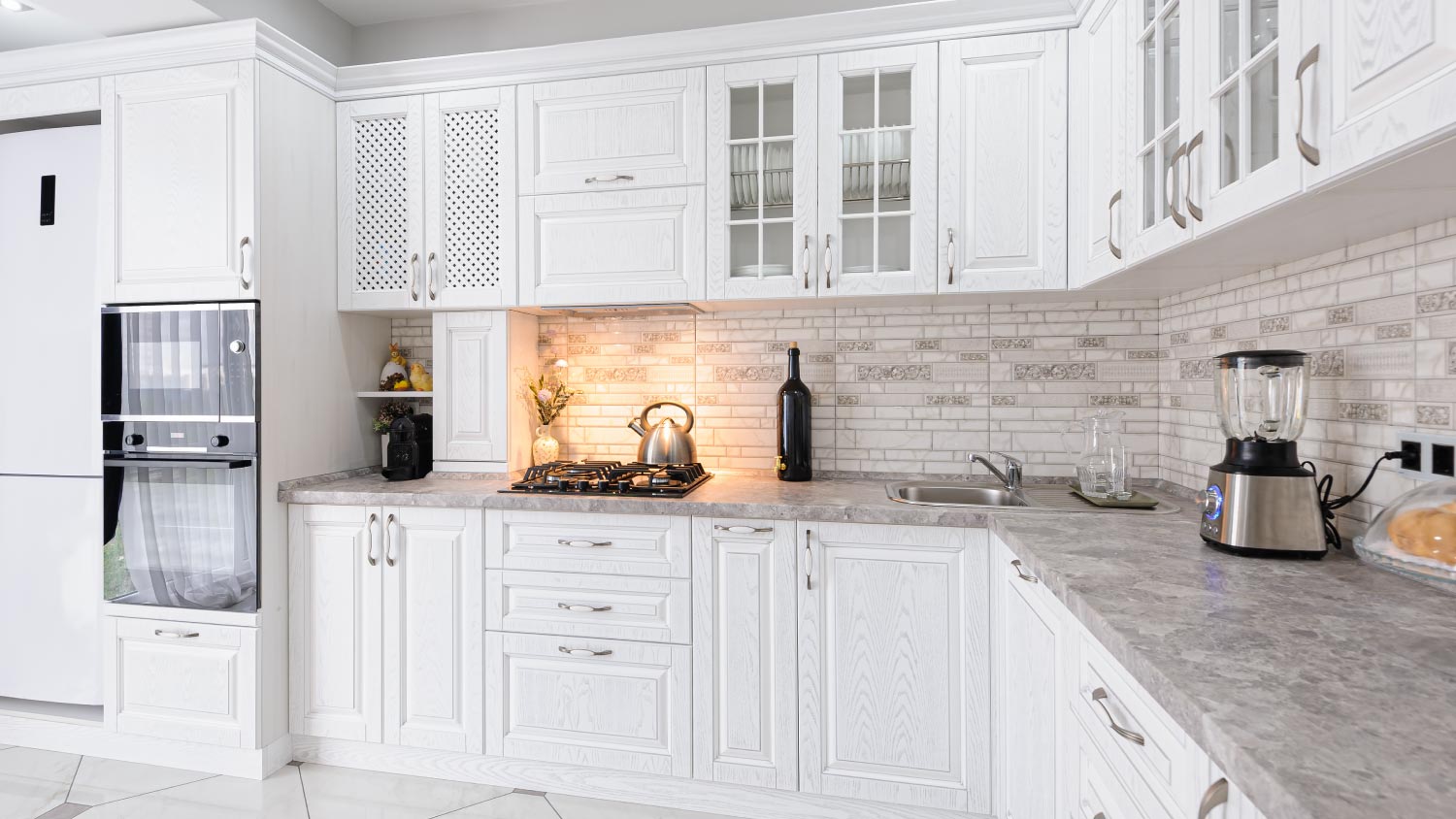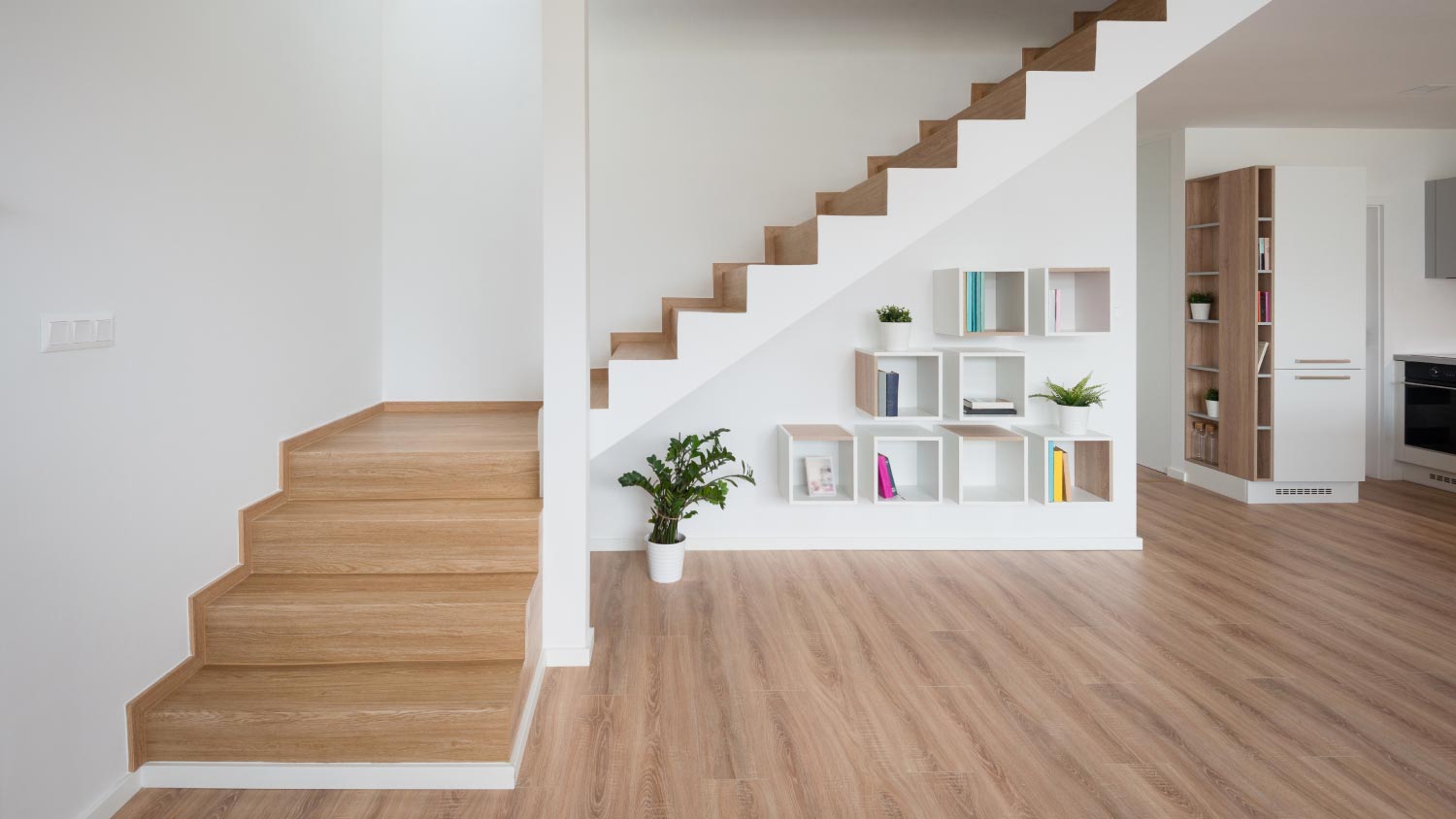8 Ways To Brighten Up a Brown Room
Perk up a monotone home with these seven must-know tips


If your home’s color scheme is brown—and not by design—you’re not alone. Thanks to wood paneling, beams, flooring, staircases, furniture, and cabinetry, it takes a concerted effort to avoid a home design palette of mahogany, maple, and beige tones. Read on for ways to lighten up a brown room and make your space more dynamic and bright.
1. Lighten the Wood

Does your home have dark brown wood panels, beams, floors, cabinets, or furniture? If the wood elements are darkening your home, consider sanding and re-staining them a lighter hue or painting them white. You don’t have to change all of the dark wood in each room—you can choose which elements to modify. For example, if your kitchen features natural-stain wooden cabinets, you could paint the center island a light hue, like blue or green, to incorporate a brighter color. For a den, you could paint your wood paneling white, but keep the espresso-toned wood floors.
2. Change the Color of the Walls and Ceiling

To make a design statement and draw attention away from the brown furniture and flooring, try choosing a different paint color, like light blue, for the ceiling. Another option is to paint the walls and ceiling an airy, soft hue, such as white or cream. When selecting a paint color, consider using a satin finish rather than an eggshell finish, so that the surfaces reflect more light.
3. Add a Backsplash
In your kitchen, provide contrast to wooden cabinets and floors with a backsplash. Try robin’s egg blue or sea green tiles, or even a slab of white and gray quartz. Not only will you be incorporating different colors, but you’ll also be adding new materials to help combat visual monotony.
4. Add Accessories
By introducing glass surfaces, you’ll brighten up your space, plus add some visual variety to break up the brown furniture or decor. This strategy can easily be achieved by positioning a mirror across from a window to reflect natural sunlight, adding a mirrored bar to a den, and placing a mirrored vanity in a bedroom.
Along with mirrors, set contrasting accessories, such as pillows, throws, area rugs, lamps, art, vases, and plants, throughout your home to add various pops of color.
5. Buy Contrasting Furniture
To help lighten a brown-toned living room or den, replace your dark furniture with non-brown pieces, such as Lucite chairs or furniture upholstered in light fabrics. To avoid purchasing all new furniture, consider reupholstering your existing sofa or chairs. Or distribute brown furniture throughout your home to avoid ochre overload in one room.
6. Choose Stainless Steel Appliances
Kitchens can easily become overly brown if they’re dominated by wooden cabinetry, floors, and furniture. To liven up these rooms, switch to stainless steel appliances, such as refrigerators, ovens, and dishwashers. As with mirrored surfaces, these appliances will reflect light and contrast with the surrounding brown elements.
7. Play with the Windows
First, wash your windows on a regular basis to make sure they let in the most amount of light possible. Then, if you don’t need the window screens, remove them. For window treatments, opt for light, sheer panels, curtains, drapes, or blinds. If you have drapes, hang the curtain rod five inches above the top of each window, which will extend it by five inches on either side of the window edges. This tactic will allow you to fully open the drapes during the daytime to brighten up your space.
8. Let There Be Light
Illuminate your brown-toned space by incorporating at least two sources of lighting, such as recessed lights and floor lamps. When choosing visible fixtures, like lamps or chandeliers, opt for lighter colors and finishes, such as white or polished chrome.





- 6 Best Hardwood Floor Stain Colors and 10 Tips on How to Choose
- The Best Living Room Paint Colors to Update Your Space
- 12 Two-Toned Kitchen Cabinet Ideas for Your Next Remodel
- 5 Tips to Brighten a Dark Room
- 7 Paint Colors for Rooms With Lots of Natural Light
- 9 Easy Ways to Brighten a Dark Kitchen
- The Best Color Choices for a House With a Brown Roof
- Can You Pull Off Dark Paint Colors in Your Home? 9 Ways to Make It Work
- Make Any Room Brighter With These 8 Tips
- How to Highlight Your Interior Paint With Lighting










